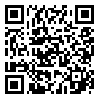BibTeX | RIS | EndNote | Medlars | ProCite | Reference Manager | RefWorks
Send citation to:
URL: http://jdisabilstud.org/article-1-2770-en.html
Background & Objectives: Intrusive thoughts, impulses, or images compose the core of some psychological disorders, especially obsessive–compulsive disorder. Also, obsessive beliefs are an important factor in turning annoying thoughts into obsessive ones. According to cognitive–behavioral theories, almost everyone experiences disturbing thoughts whose content is similar to that of obsessive–compulsive thoughts. According to contemporary cognitive–behavioral theories, increasing the frequency and intensity of everyday disturbing thoughts and turning them into obsessive thoughts depends on one's evaluation or interpretation. Inefficient ways of dealing with disturbing thoughts lead to negative moods and neutralizing behaviors. Behaviorists also explain obsessive–compulsive disorder through a conditioning process in which obsessive thoughts are associated with anxiety and stress. Understanding the cognitive patterns of obsessive–compulsive disorder is essential. The present study aimed to present a structural model for explaining students' obsessive beliefs based on metacognitive beliefs and symptoms of stress, depression, and anxiety with the mediating role of inferential confusion.
Methods: The research is a correlational study. The study's statistical population included all high school students in Aligudarz City, Iran, in the academic year 2020–2021. The sample size was calculated based on the ratio of a sample size to the number of observed variables. It was 300 male and female high school students who were selected by cluster sampling method. To measure the variables, we used the Obsessive Beliefs Questionnaire (Obsessive Compulsive Cognitions Working Group, 2005), Depression Anxiety Stress Scales (Lovibond & Lovibond, 1995), Metacognitive Beliefs Questionnaire (Wells & Cartwright–Hatton, 2004), and Inferential Confusion Questionnaire (Aardema et al., 2005). Data analysis was performed at the significance level of 0.01 using descriptive statistics (mean, standard deviation) and inferential statistics (structural equation modeling and the Pearson correlation coefficient) in SPSS20 and AMOS24 statistical software.
Results: The results showed that the total path coefficient was positive and significant between obsessive beliefs and symptoms of stress, depression, and anxiety (β=0.205, p=0.014). The direct path coefficient was positive and significant between metacognitive beliefs and obsessive beliefs (β=0.279, p<0.001) and their total path coefficient (β=0.440, p<0.001). The direct path coefficient between inferential confusion with obsessive beliefs was positive and significant (β=0.382, p<0.001). The indirect path coefficient was also positive and significant between metacognitive beliefs and obsessive beliefs (β=0.159, p<0.001) and the indirect path coefficient between obsessive beliefs and symptoms of stress, depression, and anxiety (β=0.110, p<0.001). Also, the goodness–of–fit indices showed the fit of the research model with the collected data (χ2/df=2.41, RMSEA=0.069, GFI=0.908, CFI=0.950, AGFI=0.872).
Conclusion: According to findings, metacognitive beliefs and symptoms of stress, depression, and anxiety affect obsessive beliefs in students. Also, the inferential confusion positively and significantly mediates the relationship between metacognitive beliefs and symptoms of stress, depression, and anxiety with obsessive beliefs.
| Rights and permissions | |
 |
This work is licensed under a Creative Commons Attribution-NonCommercial 4.0 International License. |




